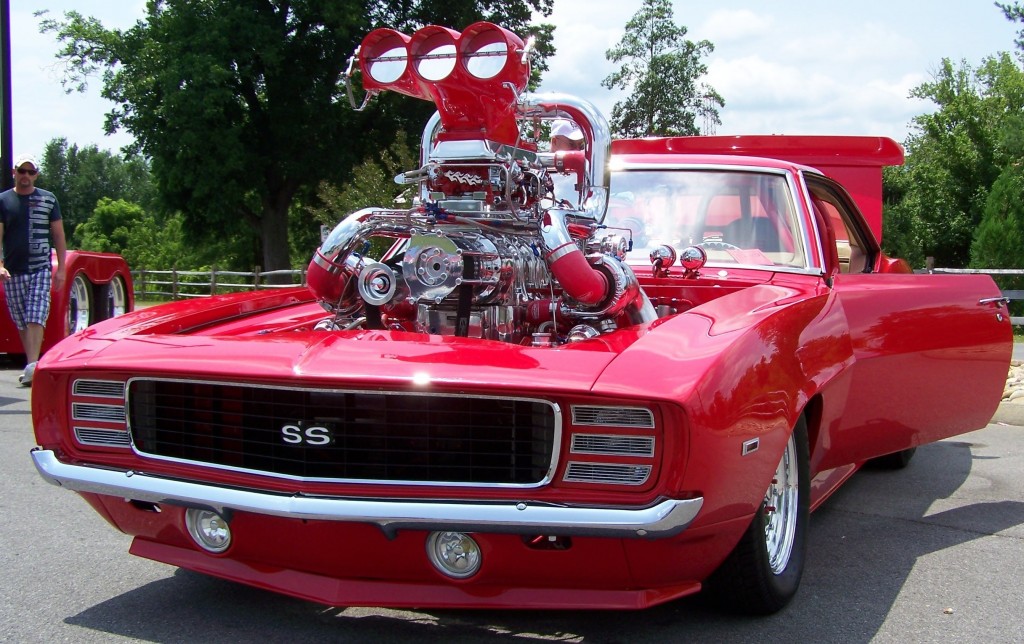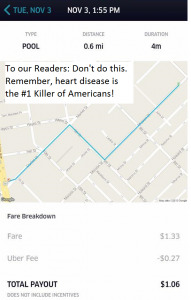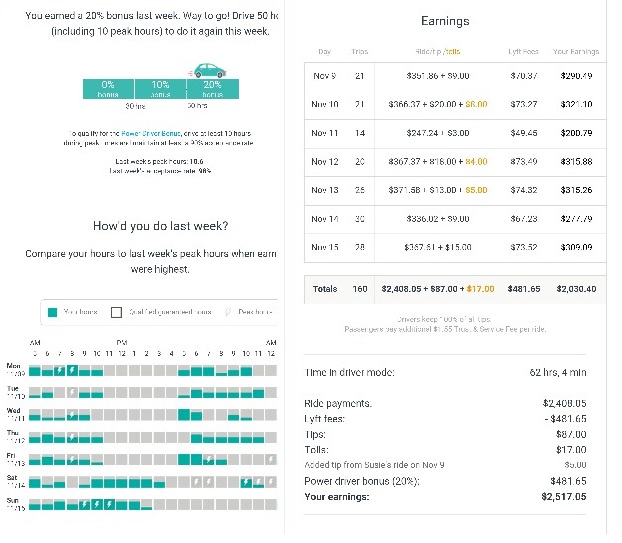Harry here. I’ve always been a big fan of Lyft despite never really having been able to take advantage of all they have to offer. Today, RSG contributor Christian Perea takes a look at one of the nicest parts about driving for Lyft: The Power Driver Bonus.
Update (11/23/15): We just got the email informing us that Lyft will be changing the Power Driver Bonus in San Francisco, Salt Lake City, and San Diego as of December 14th. This article was obviously written before that e-mail went out but in short, the new terms will count rides instead of hours and require newer cars in the three cities above.
Most drivers may not realize it, but Lyft’s Power Driver Bonus can really increase your margins. As drivers continue to express outrage at Uber’s 63 cent UberPool rides or $16 fares from SF to Palo Alto, I think a lot of full-time Uber drivers should give the Power Driver Bonus another look.
Related Resource: Learn More About Uber vs Lyft
In fact, one of the most surprising things I’ve learned while riding as a passenger is that many drivers aren’t even aware of Lyft’s Power Driver Bonus. This surprised me because in San Francisco, Uber and Lyft requests are pretty similar in volume (according to JZ, Lyft has 40% market share in SF). So it would go to reason that if you had two options that had similar rates and provided a similar number of rides, you would go with the one where you get to keep the most money, right?

Numbers and Money: Higher Margins Per Call
If you drive full time for Uber, you are paying at least 20% of your gross fares to Uber. This does not include “Safe Rides” fees or the unfortunate group (new drivers) that pays 25% or more to Uber. So right from the get-go, you have to realize that you are weighing whatever extra volume you can get from UberX with the higher margins you can get from Lyft on a per ride basis if you end up getting the Power Driver Bonus as a full-time driver.
Related Article: Whats It Like To Give Up Uber For A Week and Drive Lyft?
Beyond the extra 10% to 20% of gross fares you would get back from Lyft, there are also tips. Although tips usually do not account for very much, they usually add an extra 3-6 percent to your income. That means you are looking at more than 20% more earnings when compared to each UberX fare. This can range from as low as 23% more per call to 33% more per call if you are one of the unlucky few drivers to get into UberX at that 30% structure.
So if you get the full 20%, it’s like every ride you did that week was at least 1.2x on UberX…think about that.
To drive this point home on margins, if you live in a city with a lot of minimum fare rides, Lyft does not subtract the “Trust & Service” fee from minimum fares. This means that your $4 minimum fares are calculated from $4 instead of $4.55 – $1.55 for $3.00 x .80 for $2.40. In other words, the PDB gives you the entire minimum fare. Although nobody likes those rides, I would rather get $4 than $2.40 with the possibility of a tip.
I have also never been paid out less than the minimum fare on a Lyft Line.

So How Does It Work?
There are three metrics for getting a Power Driver Bonus. If you drive for 30 hours a week, Lyft will only take 10% of your fares. If you drive 50 hours they will take 0%. You keep it all. Plus tips.
- Total Hours Logged in Driver Mode: This is measured by the total time spent in driver mode and is recorded to the minute.
- Peak Hours: Peak hours are times when demand is at its highest and they can vary from city to city and week to week. You need to log 10 Peak Hours every week to qualify for the Power Driver Bonus, but these hours will count towards your overall total hours logged for the week.

- Acceptance Rate: Must remain above 90%. I try to keep it high and utilize cancellations during periods of heavy Prime-Time when I am sitting in the middle of it and get a request from 30 miles away in the mountains.
- Each “Week” begins at 5 AM on Monday morning and lasts…for a week. 5 AM is also the cut-off time for each day Lyft calculates fares and time and stuff.
The end-all be-all for driver stats is tracked on a separate page called the The Driver Dashboard.
The “Driver Dashboard” is accessed under the “settings” tab within the Lyft App. It is the display that will actually be used to measure your stats. It updates daily with your driver summary, so make sure that you know what you need to do come Sunday as you will not be able to see your final results until it is too late. Of course, this should be changed and the Driver Stats that we all see in the app itself should be accurate enough to depend on since it is much more visible, but don’t depend on it yet.
Compelling Examples: Kristopher Rohr and Jeffrey Fang


I asked two of the most hardcore Lyft drivers I know to submit their weeklies to show how the Power Driver Bonus affects their earnings. Kristopher Rohr and Jeffrey Fang are what I would consider to be pretty close to the maximum run-rate of a driver in San Francisco. They probably make pretty close to the most one can make per week driving Lyft in San Francisco. They know every street, streets’ speed for synchronized lights, traffic patters for all times of day and situations as well as where and when to be someplace for Primetime.


For these guys, that extra 20 to 25% in revenue adds up to $400-$600 extra every single week in their pockets. Or about $25,000 a year. Now these results are pretty much the maximum and aren’t typical, but I still think its pretty cool because $25,000 a year is a lot of money, and that is what they would be paying in “technology fees” if they chose to drive full time on UberX instead of Lyft. These results from Power Driver Bonus are obviously the upper-bound of what is possible.
What Is Lyft’s Strategy With This? How Do They Benefit?
First, they still get whatever that trust and service fee is. If you log 30 or 50 hours a week, you are basically going to rack up about $200 a week in those fees for them. So I guess there is that.
Beyond that though, only a very small fraction of drivers ever get the Power Driver Bonus. The majority of drivers are part-time or double-dip for volume and never get enough hours for the Power Driver Bonus. So in reality, Lyft is only paying out this bonus to a very small fraction of drivers.
Driver Loyalty
Overall, I think it is meant to act as an incentive to attract full-time drivers to their platform. In cities where they’ve invested heavily in marketing efforts, this offers a compelling reason to switch to the mustache company for full-time drivers. It’s pretty obvious that this program is basically just a strategy by Lyft to draw drivers over from UberX.
Control Supply of Drivers
Peak Hours are used to control when drivers are on the road. This often makes them log hours on the Lyft platform when it is saturated or slow like on a Friday or Saturday night. This works for Lyft in certain ways, but it also backfires sometimes because it causes large periods of (further) over-saturation where drivers become frustrated and feel manipulated.
They flip on the app and see UberX surging at 1.8x and switch over. Lyft can simply solve this by avoiding large blocks of peak hours and using them more strategically for commuter hours instead to balance supply and demand.
Provides Credibility of Treating Drivers Better
Whether you personally believe that they do or not, it allows Lyft to make the claim that they treat their drivers better. The PDB is sold as a merit-based program for drivers in a market that is under scrutiny for treatment of drivers. The result is that Lyft can promote that whole warm-fuzzy-kool-aid to passengers AND drivers by saying their drivers are Cage-Free and Grass-Fed on a farm in Vermont where Paul Newman teaches teaches them to drive.
To be honest, a lot of my passengers have admitted that they dropped the Uber app because their UberX drivers told them how much Uber has cut fares, increased commissions, and uses deactivation as an intimidation tactic only to then talk about how Lyft treats them better. I hear some version of this story twice a day now in SF. Lyft is clearly recruiting passengers by leveraging Uber’s negative press and angry drivers to appear as the good guy. Nothing new, and a smart strategy.
Drawbacks of Power Driver Bonus
Some Markets Have Much Less Volume
The biggest challenge is that many, if not most, markets cannot compete well on a volume level with Uber yet. This makes it harder for drivers to commit 50 hours a week to something they may not profit as much from. In smaller markets, it could result in many drivers sitting for hours without a call or ping from Lyft.
When I drove in places like Santa Barbara or San Diego, I often found myself sitting around a lot more waiting for pings until I got bored and turned on the Uber app to get a request within five minutes.
The thing was that when I ran the numbers, I was certainly much busier with UberX, I just wasn’t making as much money, and I was spending a whole lot more to turn the wheels on my car for 20-30% less per mile.
Record-Keeping Shenanigans
Lyft still has to work on glitches around hours within the driver stats and make it clear as day that between your daily summaries, driver stats, and driver dashboard that the driver dashboard is what reflects the data being used to meet the Power Driver Bonus criteria, especially when there are discrepancies. The overall attitude seems to be a “we will wait until a bunch of them complain and then do something” more than “we should let everyone know there is this problem, and how to circumvent by sending an email and text.”
Peak Hours
These hours vary by city and market depending on a few factors. Often these hours are stacking onto the weekends and generate a massive amount of saturation. This is especially the case in San Diego where, last time I checked, all of the power hours are on Friday and Saturday. This seems to be a little lazy in calculating demand because there are a lot of times throughout the weekday in that market during morning commutes or evening commutes where power hours would likely be helpful and when Lyft actually could use a supply of more drivers as it attempts to market itself as a commuting solution.
Power Driver Bonus: Overall
If you live in a market where volume is similar to UberX or drive hours when volume is considerable, you should seriously consider driving for Lyft’s Power Driver Bonus. It feels good to get all of the money back and to see tips come in to boost your income at the end of the week.
Just make sure to be on your A-game with dealing with the hoops you have to jump through to get the PDB by tracking things via the Driver Dashboard. However, if you are in many markets that don’t have enough volume, you may find it difficult to justify going for the Power Driver Bonus unless you are focused on margins and have something to do in your downtime.
But I would be lying if I said that I didn’t drive Lyft full-time because of the Power Driver Bonus.
Drivers, what are your thoughts on Lyft’s PDB?
-Christian @ RSG




